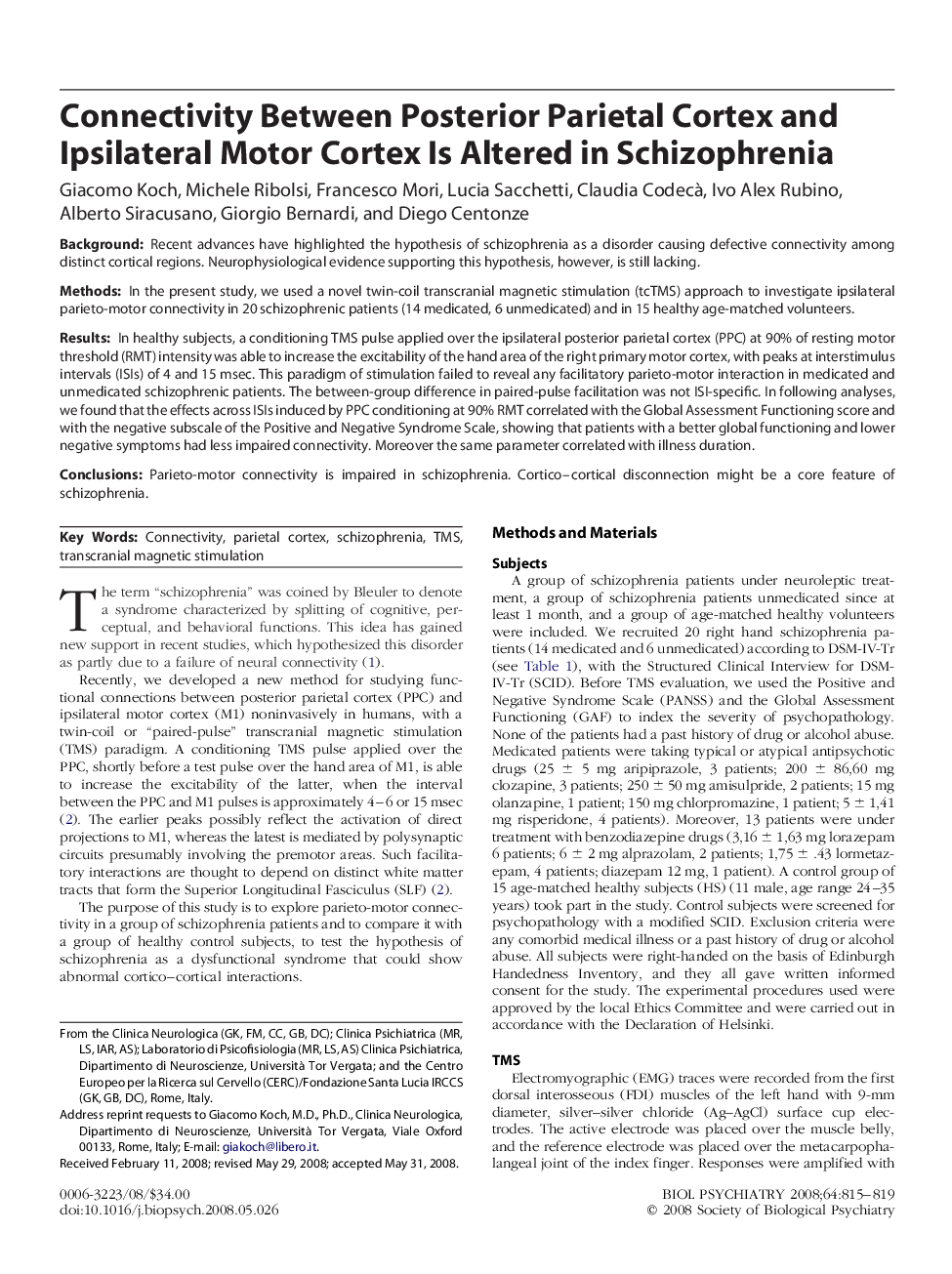| Article ID | Journal | Published Year | Pages | File Type |
|---|---|---|---|---|
| 4179561 | Biological Psychiatry | 2008 | 5 Pages |
BackgroundRecent advances have highlighted the hypothesis of schizophrenia as a disorder causing defective connectivity among distinct cortical regions. Neurophysiological evidence supporting this hypothesis, however, is still lacking.MethodsIn the present study, we used a novel twin-coil transcranial magnetic stimulation (tcTMS) approach to investigate ipsilateral parieto-motor connectivity in 20 schizophrenic patients (14 medicated, 6 unmedicated) and in 15 healthy age-matched volunteers.ResultsIn healthy subjects, a conditioning TMS pulse applied over the ipsilateral posterior parietal cortex (PPC) at 90% of resting motor threshold (RMT) intensity was able to increase the excitability of the hand area of the right primary motor cortex, with peaks at interstimulus intervals (ISIs) of 4 and 15 msec. This paradigm of stimulation failed to reveal any facilitatory parieto-motor interaction in medicated and unmedicated schizophrenic patients. The between-group difference in paired-pulse facilitation was not ISI-specific. In following analyses, we found that the effects across ISIs induced by PPC conditioning at 90% RMT correlated with the Global Assessment Functioning score and with the negative subscale of the Positive and Negative Syndrome Scale, showing that patients with a better global functioning and lower negative symptoms had less impaired connectivity. Moreover the same parameter correlated with illness duration.ConclusionsParieto-motor connectivity is impaired in schizophrenia. Cortico–cortical disconnection might be a core feature of schizophrenia.
